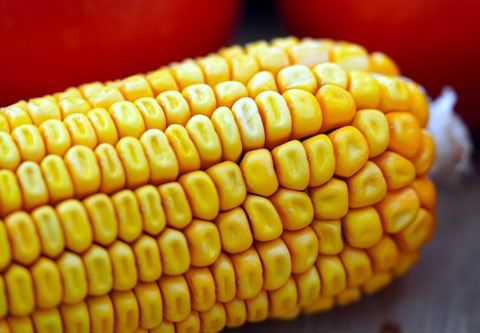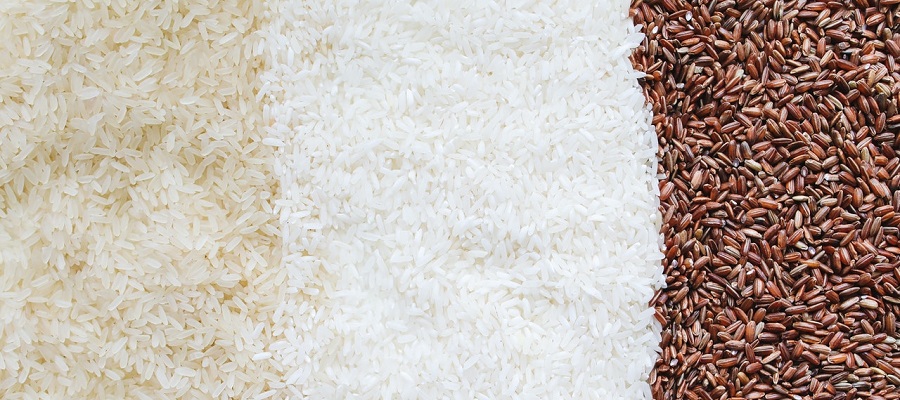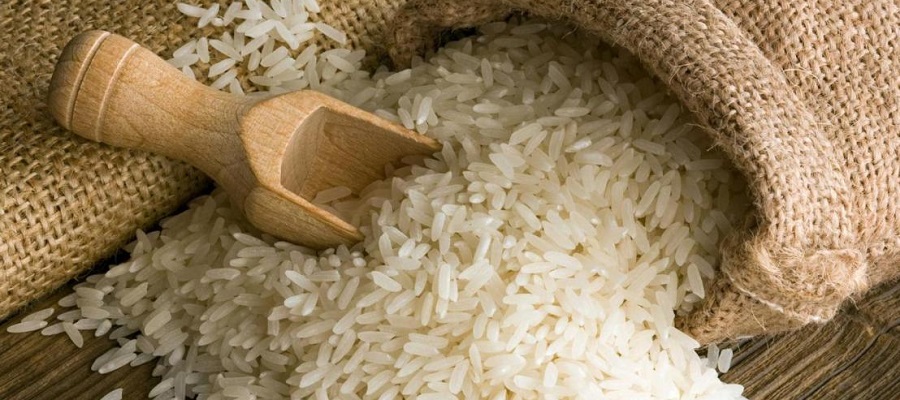Rice
During the months of October and November, rice is harvested on a yearly basis. Cultivated rice is 1.2m (4ft) tall. A hollow stem holds the long, flattened leaves, which may be seen from the top of the plant. It is not uncommon for the fibrous root system to be both wide and spreading in nature. As the name suggests, the inflorescence (flower cluster) is made up of spikelets, each of which bears a flower that produces the grain. The length, form, and weight of the panicle, as well as the total output of a plant, may vary substantially across varieties.
More than half of the world's population relies on complex carbs for their daily calorie intake. Rice may be a good source of fiber, protein, vitamin B, iron, and manganese, depending on the strain. Against malnutrition, this is a huge asset. Rice is thrown during weddings in several cultures.

https://pixabay.com/photos/rice-cultivation-rice-fields-4165415/
Rice accounts for 21% of worldwide human per capita energy and 15% of global human per capita protein consumption. Rice protein is among the most nutritious grains; however, its protein concentration is low. Rice also contains minerals, vitamins, and fiber, despite the fact that milling reduces everything except carbs.
Maize
Cereal grain maize was first domesticated in Central America and is now the world's most important crop. Maize is renowned as the "Queen of Cereals" because it has the largest genetic output potential of any cereal crop. Unlike other food crops, maize is able to thrive in a wide range of conditions and be used in several ways. Animals are often fed maize. There are several goods made from it, including cornmeal, grits, flour, starch, and tortillas. Chapatis, or flatbreads, are the bread of choice in Mexico, where maize flour is the primary ingredient.

https://pixabay.com/photos/corn-vegetable-food-corn-cob-maize-6661530/
In the majority of families, maize serves as a primary source of food and is the most significant element in animal feed... There's been an increase in demand for animal protein, such as meat and dairy products such as eggs, which has led to a greater need for maize in the feed market.
Soybean
Annual legume of the pea family (Fabaceae) with its edible seed, Glycine max (commonly known as soja bean or soya bean). More than a hundred chemical compounds rely on soybeans, making them the most commercially significant bean in the world. Foods made from soybeans may lower the risk of cardiovascular disease, stroke, coronary heart disease (CHD), various malignancies, and improve bone health. One or two daily servings of soy products may be good to our health since soy is a high-quality protein. Soybean is one of the world's most significant pulse and oil seed crops. Around 110 million hectares of land in India are devoted to the growth of Soya bean. Soybean yields per acre in India average 13.5 quintals.
Cotton
Cotton is a warm-season, woody perennial shrub that is produced as an annual field crop in the fields of the United States. For this reason, farmers may pick from a wide range of different cotton cultivars, each of which has been specifically designed to perform well under different environmental and cultural circumstances. Cotton is Pakistan's most significant cash crop, accounting for 55% of the country's total foreign currency revenues. Cotton production contributes 4.5 percent of AgGDP and 0.8 percent of GDP to the total value added. ... Approximately 55 percent of Pakistan's export revenues come from cotton, and the nation has a 14 percent share of the world's textiles exports. Cotton is a major cash crop and fibre in the U.S. economy, as well as a major component of the textile industry. Cotton textile manufacturing relies on this raw resource. Cotton has been farmed for food, fibre, and even fuel for over 6,000 years. Even if you don't use cotton clothing, bedding or towels, you'll find cotton in everything from rope to money to paper to cooking oil to animal feed to packaging.
Millet
This genus of small-seeded grasses is extensively farmed all over the globe as a source of food and fodder for livestock and humans alike. Most millets are members of the Paniceae tribe, but there are also a number of other taxonomic groups that are often referred to as millets. Insoluble and soluble fibre may be found in millet. As a prebiotic, millet's insoluble fibre promotes the healthy microorganisms in your intestines. Colonic cancer risk may be reduced by increasing stool size, which is why this sort of fibre is so essential. At this site, Millet Mountain Group SAS employs 249 people and produces $93.88 million in revenue (USD). The MILLET MOUNTAIN GROUP SAS business family consists of 205 entities.


